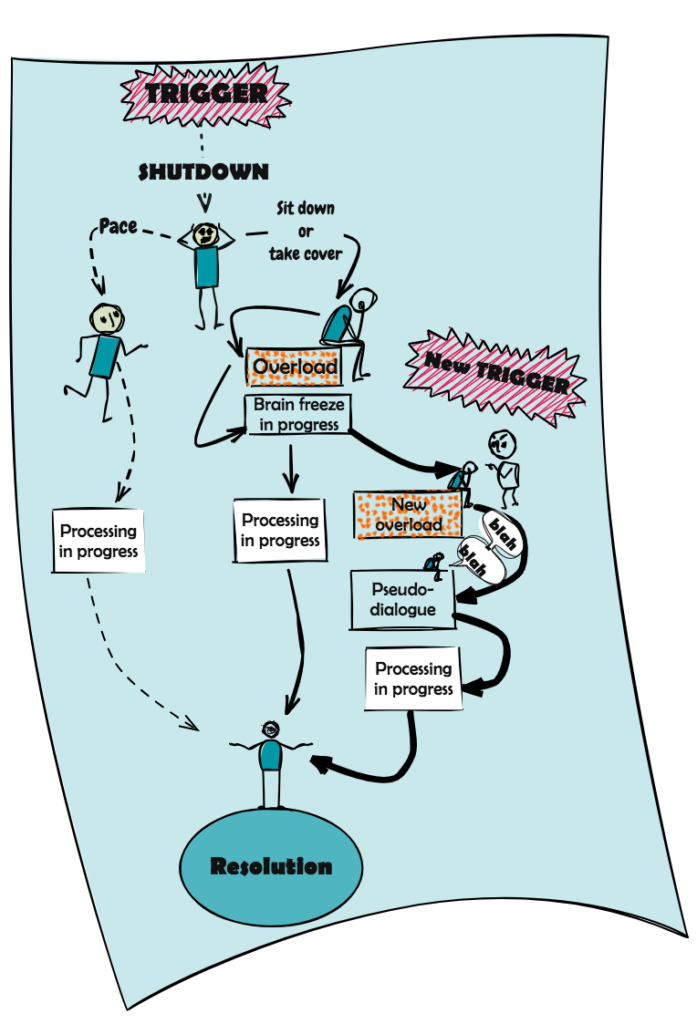In The Tangram Method I described a session with a young person who used to have shutdowns fairly regularly. His story is told through the character called Albert. Below I give you an extract from my book, where I explain what I learned with Albert through that experience.
The stages leading to a shutdown
- Stage 1: The triggers
Triggers can be situations that create cognitive or emotional pressure and cause a reaction. Albert identified some of these triggers such as: changes in routine; a new topic unexpectedly introduced; a concept that Albert finds hard to grasp; or a different way of solving a mathematical algorithm compared to one with which Albert is familiar. He perceives these occurrences as causing stress, anxiety, the need for escapism and the need for a defence mechanism. Albert’s triggers are predominantly of a cognitive nature, with only a small minority relating to social anxieties.
- Stage 2: The shutdown and pseudo-dialogue
Once triggered, Albert may start a shutdown silently or accompanied by some verbal stimming. Occasionally, silence and verbal stimming appear intermittently in the same crisis, depending on the occurrence of new triggers. For Albert, the shutdown mode is a state of mind that manifests physically, as he must sit or lie down on the floor, motionless, silent and not listening to anyone’s voice. Alternatively, he will walk continuously for some time at a certain pace. The surrounding noises usually do not influence him, but human interaction will. Therefore, Albert needs processing time alone.
The pseudo-dialogue is a strategy to block interactions by disallowing input. It consists of continuously repeating a sentence or a response pattern, even when different questions are asked. He may answer, for instance, ‘Why am I like this?’ to any question. Showing that Albert most likely did not process the actual question, the default answer is disconnected from the interaction and is part of his internal dialogue while searching for a resolution.
When trying to understand what happens on these occasions, from a cognitive perspective, Albert reflected on if he realises he is repeating words or sentences; and if he could stop doing that if he wanted to do so. He concluded that during these moments, although he is aware that his brain is stuck in the verbal repetition, he is not sure if he can control it. He thinks he needs to continue until it fades away. Albert described his shutdowns as a wave of darkness that stops his brain from functioning properly and causing him utter frustration with himself.
- Stage 3: The resolution
When the dark wave is gone and the cognitive abilities return, the resolution is reached. Albert always verbalises his sense of relief when that stage is reached. Resolution does not come easily and Albert recognises he needs some reassurance when transitioning towards the final moments of the shutdown, when the communication channels gradually reopen. Albert would like to come back to discuss this transition process in the future.
Cognitive flow
Once we understood the mechanics of the process of switching from normal mental functioning to the shutdown situation and back to functioning, we devised a flowchart to illustrate how information navigates Albert’s cognition during a shutdown episode. That flowchart is presented here in the following diagram.

